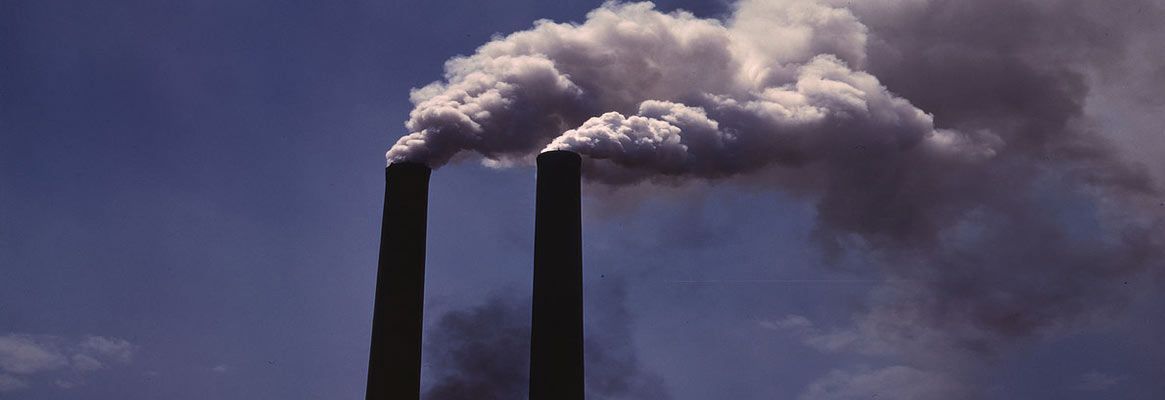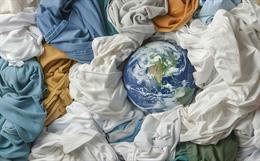By: Atul Kumar & Y. K. Saxena
Introduction
Waste is a common problem throughout the companiescomprising the chemical process industries as well as textile industry also. Itis especially a concern to these who manage solid waste, wastewater systems, andhazardous waste or air pollution control devices - typically systems for handling'end-of-the-pipe' wastes.
Regardless of its type, waste is almost always composed ofpurchased raw materials that did not become part of a final product. Forexample, some chemical manufacturers, such as liquid latex producers, havefound that their wastewater stream is a dilute form of their primary product.Much of this waste is the result of process inefficiencies that causeentrapment and loss of raw materials. These are conventionally disposedthrough equipment cleaning. However rethinking and improving process design,piping and vessel design and material-handling techniques can improve processefficiency. The result is reduced waste generation, reduced operating costs,cleaner equipment and increased profits.
A Closer Look at Cleaning
In process industry, equipment is cleaned to remove residuesthat have a negative effect on the final product or cause production problem.For instance, batch mixing consumer product, such as a water-soluble liquidlaundry detergent. may leave a viscous residue that is incompatible with thenext product due to colour, content, pH or other properties. Process equipmentis washed to remove residues to the point that the amount left in the systemwill have a negligible effect on the next product.
Flushing the equipment once with water may remove 90% ofthe residue; and flushing again may remove 90% of the remaining residue,leaving only 1 % of the original contaminant.
Additional washing removes more residues, but at some pointthe equipment is clean enough to produce the next batch. Additional washing, atthis point, only increases downtime, labour costs, water use andwastewater-treatment costs. The goal of cleaning is not to leave the equipmentperfectly clean (which is impossible to achieve, in any case), but to removeonly as much contaminant as is necessary to cause the process or product tofunction as required. Some manufacturers have found that eliminating cleaningsteps cause no product or process problems.
Doing the Math
The residue left inside a vessel may me insignificant. Butthis material, plus the amount of cleaning done to remove it, is far fromnegligible, once costs are calculated over the Iong run.
Residual costs
These residues may seem to minimally impact the bottom line,but their effect on revenues is actually high.
Besides the revenue lost through wasted product, costs areincurred through cleaning. Removing the residue by cleaning is one method toreduce the residue volume, but this does not reduce cost.
Improved Equipment Design
Equipment can be designed to reduce the volume of a chemicalthat adheres to an interior surface or becomes trapped in the system. Processequipment includes not only large mixing vessels but also piping. mixers,pumps, baffles, filters, strainers, valves, reactor, and any other componentsthat come in contact with the product.
Piping
As a minimum process piping should be sloped sufficiently to allow gravity drainage into the process. The extent of sloping depends on the product: While a 10% slope might be sufficient for water, more-viscous products would require more sloping.
Pipes must also be properly supported to prevent sags, which can trap large volumes of fluid. The amount of necessary support depends on the specific size of pipe, and the material and weight or the product being piped. Pipes should at least be sufficiently supported that there is no visible bowing or sagging. Smooth interiors and seamless joints are also desirable.
Rough Connections
Threaded pipe connections have discontinuities at joint and exposed threads that can easily trap materials. Machined male-female flanged pipe joints are always preferable to threaded connections, since they provide smooth, concentric transitions between pipe runs. Abrupt changes in pipe size should also be avoided.
Dead Ends
Another common error in pipe design is having unused, dead-end pipe runs "for future use." This is often seen on mixing vessels and tanks having an unused. capped pipe nipple welded to the side or bottom, intended as a drain or filling point. If it isn't functional, the unused pipe segment only traps process chemicals.
Dead-end pipes are also difficult to clean. It is much better to remove unused pipes and finish the connection points smoothly. Piping can always be added at a later date.
Spill Guards
Production equipment can also be designed to reduce the need to clean. Guards should be placed around processes to catch drips and splatters that would have to be cleaned up. Funnels and guides can be added to equipment to allow operators to add dry or wet chemicals without spillage.
Recycled Spillage
Internal passages can be designed so that production chemicals drain into the process instead of becoming trapped inside equipment. Internal passages and external piping should he designed to be as short as possible to reduce the amount of surface area that may need to be cleaned between production runs. Drip trays, pans and drain boards can be designed as part of equipment to channel spills back into the process.
Smooth Surfaces
Nonstick surfaces, such as Teflon or Polyethylene, can be added to production equipment to aid in residue removal. Powder-coating paint booths e.g. typically have smooth plastic interior surfaces to prevent powder from adhering. Vacuuming is a good way to clean these.
Slippery Coatings
Scrapers and automated knives in the plastics industry are often coated with Teflon to prevent adhesion of resins to the knives. Paint booths are often coated with paper or strippable chemical coatings to eliminate the need to use harsh stripping chemicals during paint cleanup. A simple example of a strippable coating is applying a light layer of hydraulic oil to the exterior surfaces of paint-roll-coating process equipment, to prevent paint splatters from sticking. When dry, the paint is removed by sweeping or vacuum cleaning.
Smarter Scheduling
If the same product is made day after day, cleaning between batches can often be eliminated, since it's unlikely that there will be any chemical incompatibilities between residues and virgin product. Dedicating equipment lines to the same product or compatible products is a common method used by chemical manufacturers.
Chemical Compatibility
A manufacturer may process six products on two different lines. If three of the products are chemically compatible, then those three products can be dedicated to one line. The remaining three could be manufactured on the other line, where cleaning would still he required between batches. Clearing of equipment on one line would be eliminated.
Energy Efficiency
Temperature changes should be considered for scheduling purposes. For example, processes that run at the same temperatures should be run consecutively to conserve energy.
Revised Runtimes
Another alternative is to extend the run time of each product. If each product is processed for one day, prior to cleaning and changeover, increasing processing time to two days for each product will reduce the number of times the equipment is cleaned from 300 to 150 times per year. For example, painting, printing or dyeing processes should be run with products that use the same colours and chemistries over the course of a day or shift to reduce cleaning to only the end of the shift. If colour or chemistry changes are needed, colours should be run so that each production change results in a darker colour. Avoid drastic changes in product formulations, such as oil-based back to water-based.
Filling and Transferring
Transferring solids and liquids to and from bulk containers, product packaging and process equipment normally results in spills and incomplete transfer. It is common to see a product flowing across the floor from transfer stations to a floor drain or storm sewer. Some of the most common causes of material loss during transfer include:
- Overfilling
- Splashing
- Air blow-back as a container is filled
- Incomplete draining of bulk containers and tanks
- Poorly defined transfer methods
- Lack of operator training
Reducing Spills
Controlling {he rate of filling, providing properly sized fill nozzles and controlling filling by weight (as opposed to time or sight) will reduce spills. When dealing with products that are likely to splash or create foam that will overflow, filling product containers from the bottom through a fill tube can reduce spills.
Unused Product
Totes and other reusable containers are commonly returned to supplier with several gallons of materials still in the bottom. This typically happens because there is no way to measure the amount of material left in the container. In addition, even if the leftover material is detected, there is no way to remove it.
Weighing Method
Some companies have found that placing bulk containers on scales and pumping materials out until the tare weight is reached produces a rapid payback.
Bottoms Up
Frequently, simple techniques can be used to solve the problem of leaving costly raw materials in containers. For instance, simply inverting the container and allowing an extended draining time can result in significantly higher transfer efficiency.
Return Policy
Allowing customers to return bulk containers with materials
still in them also causes disposal and cleaning problems for the supplier e.g.
a small Atlanta based manufacturer of water based adhesives ships adhesives
packaged in totes, to customers. Empty totes are returned to the firm for
refilling. The used totes can range from completely empty to nearly full when
returned. In order to reuse the totes, the company has to clean remaining
material and residue from the totes. Cleaning costs are directly proportional
to the volume of adhesives remaining in the containers.
Too full Drums
Overfilling of containers is also a problem. even without overflow. This is because the drums are designed to have an air space at the top when full of product.
Variations in temperature can also change the volume of the fluid in the drum, which can cause overflows, under filling or overfilling as the temperature changes. It is therefore better to determine by weight when a container is full.
Involuntary Bonuses
Manufacturers who overfill containers unwittingly give their customers free product and sustain the losses in their bottom line.
Self Cleaning And Recycled Waste
Sometimes processes can be designed to be self-cleaning. For instance, if water is the common ingredient to all products, water can be added to process equipment last, flushing all previously added materials through fill pipelines into the process. Water is used as a cleaner, and as an ingredient to the product.
Pigging Out
Some companies use water in conjunction with a pig system to eliminate cleaning and decrease loss of raw materials (box). A pig is a rubber plug that is pushed through pipelines by compressed air, fluid or mechanical linkage.
Pigs function by scraping residues from the inside of pipelines and positively forcing all materials in the pipe to the desired locations. Pig systems can be part of engineered automated systems, or they can be used manually. One company even reports using tennis balls pushed through pipelines with compressed air to empty process lines at the end of shifts to prevent the need for heavy cleaning.
Recycling Wastes
Reusing clean up wastes later can also be an effective way to recover raw materials and reduce waste disposal costs. Mixing vessels can he cleaned with water or sol vent, which is stored until the same product is run again. The cleaning residue becomes part of the product.
Paint Thinner
Cleaning solvent from flushing paint lines, paint guns and storage containers can be collected. Instead of disposing of the used cleaning solvent as a hazardous waste, the cleaning solvent is directly used to thin coatings of the same colour to their required consistency. As a result, hazardous waste, disposal costs and raw material purchases have all been reduced. In order to reuse a cleaning solvent, of course, it is important to select a cleaning chemical that will be a useful component in the final mixture.
Training, Procedures And Tools
Even if a manufacturer has the best bulk loading and container filling procedures and the most efficient process equipment possible, employees themselves can involuntarily add to the waste problem. Workers not having or following defined material handling and cleaning procedures will produce more waste.
Informing Operators
Employees should be instructed and periodically reminded of how to transfer materials and clean equipment and spills. In addition to training, the proper tools must be provided to employees.
Equipping Employees
Necessary equipment for workers includes materials handling
devices such as drum pumps and funnels, spill containment equipment such as
pallets and pads for loading and unloading materials, and cleaning equipment
such as vacuum cleaners, brooms, dust pans and absorbent materials for
collecting small spills. Production employees can often provide invaluable
assistance in developing material handling procedures, since they are most
aware of where spills and other problems exist.
Troubleshooting Workers
Some times a source of contamination can be traced to employees themselves. For instance, in one manufacturing plant, a cleaning problem with equipment discovered to be caused by a hand cream used by several machine operators. Hand washing, instead of parts washing, solves the problem.
Waste Treatment And Disposal
Treatment and disposal costs can be significant. If wastewater is treated onsite prior to disposal, this incurs additional costs. Wastewater can sometimes be reused either before or after treating. For example, process equipment can be rinsed with previously used water to remove heavy residue, and followed with a fresh water rinse.
Reducing Water Usage
There are several ways to reduce water or solvent usage for equipment cleaning. One way is to employ a two stage rinsing process. Instead of a single rinsing step, rinsing is done twice but with a much smaller volume of water or solvent. The advantage of using this method is that often water or solvent usage can he reduced by 50% or more.
Interpreting the Results
The reason that so much less water is used to achieve the same level of cleaning is due to dilution. Assuming that the residue is soluble in water, the first rinsing process removes most of the residue. The second rinsing dilutes and removes most of the remaining waste.
In situations where residue has limited solubility in water or solvent more cleaning solution may be needed in the first stage and a smaller amount in the second stage, but overall usage can still be reduced. It is also possible to store and reuse the second stage cleaning solution, reducing usage further.
Counter flow
An additional method for reducing water usage is counterblow techniques. In counterblow rinsing or washing, water flows from one rinse tank to the next, in the opposite direction of the components being washed. Thus, the dirtiest parts contact the dirtiest water first.
In some cases. chemical and cleaning wastes are considered hazardous, resulting in regulatory reporting and higher disposal costs. Often, chemical plants deal with substances that are not soluble in water and thus require solvents for cleaning. Cleaning solvents, in many cases, are much more expensive than water to use and dispose which increases handling costs.
Hazardous And Toxic Products
Many CPI companies manufacture products that contain toxic materials, or materials that are considered hazardous due to properties such as high or low pH. In other cases, products may have low solubility in water, requiring the use of solvents for cleaning.
Cleaning wastes in both of these situations often must he managed as hazardous waste. Sources of waste, cost issues and reducing system losses of raw materials are equally applicable to these situations. In addition, a number of companies have eliminated hazardous and reportable toxic waste by substituting nontoxic chemicals for toxic ingredients or cleaners.
Alternative Solvents
Some makers of printing inks have substituted less hazardous
and toxic materials in their products and cleaning materials. A picnic example
is the substitution of n-methyl pyrrolidone, dlimonene, water, acetone and
glycol ethers for solvents, such as xylene, toluene and methylene chloride, recently
used in printing inks and cleaners. Many ink manufacturers have found other
workable substitutes. Blends of solvents, for instance, are often used to
replace single solvents, when there is no single substitute found to duplicate
specific properties.
Fringe Benefits
The advantage of finding nontoxic solvent substitutes for printing ink manufacturers is reduced releases of toxic chemicals during production. There is also a ripple effect to their customers - commercial printers. Many small and large printers have reduced emissions of toxic chemicals as a direct result of these changes. Often, the painter is not even aware that changes have taken place.
Aqueous Formulations
Printing ink manufacturers have also introduced water based inks and printing press cleaners that reduce the release of regulated materials by both printers and ink manufacturers.
Conclusion
Waste increases operating costs. This is only part of the cost however for environmental reporting. In fact cradle to grave often known as Life Cycle Analysis, responsible for waste and lost productivity can cost much more to process industries. In terms of productivity, the work needed to make up for the loss should be considered, because the plant would have to operate few additional days annually to compensate the loss if industry is conscious. The waste minimization techniques often considered the best tool for pollution control at source and to improve not only productive but enhance compliance status from environmental angle.
About the Authors:
Mr. Atul Kumar is the Sr. Environmental Scientist & Mr. Y. K. Saxena is the Vice President - EHS Corporate in Gujarat Ambuja Cements Limited
To read more articles on Textile, Industry, Technical Textile, Dyes & Chemicals, Machinery, Fashion, Apparel, Technology, Retail, Leather, Footwear & Jewellery, Software and General please visit http://articles.fibre2fashion.com
To promote your company, product and services via promotional article, follow this link: http://www.fibre2fashion.com/services/article-writing-service/content-promotion-services.asp


_Small.jpg)




